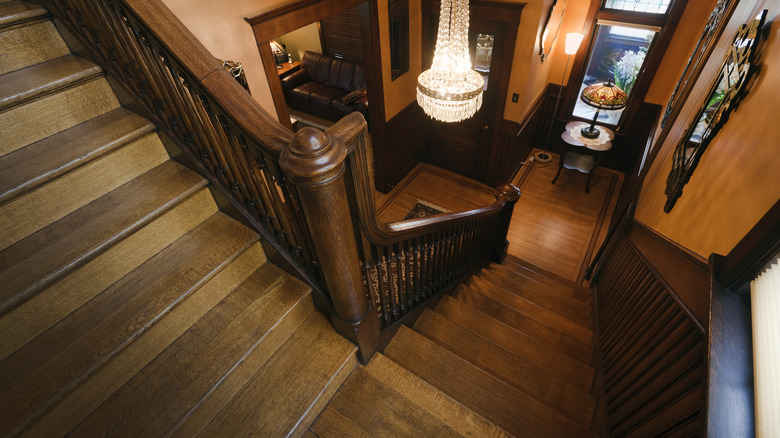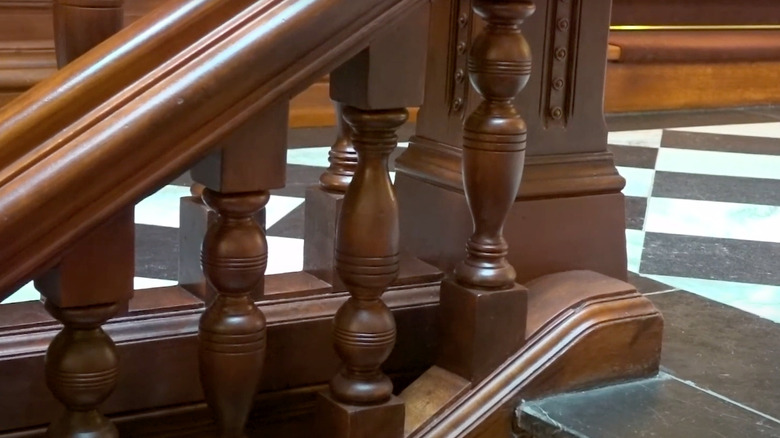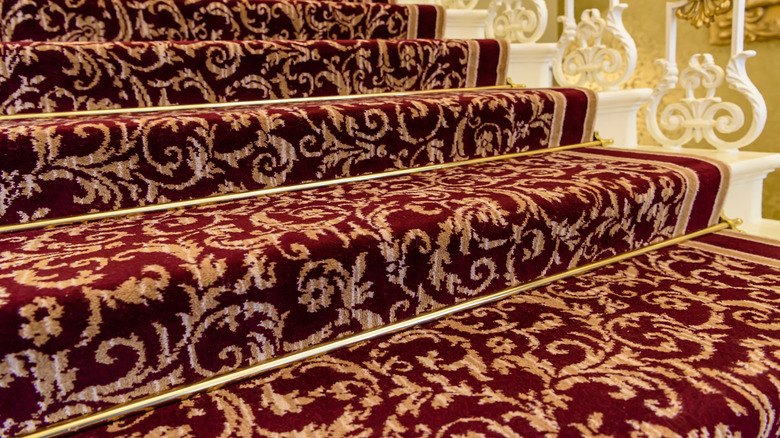This Small Detail In Your Staircase Has A Surprising Hidden Meaning
Do you live in an old house that still has its original staircase? If so, there's a chance the rickety old stairs may harbor a mysterious, if slightly eerie, secret with a connection to the supernatural realm. Next time you traverse the staircase on your way up or down, pay close attention to the spindles. Are they all installed with the same side up? Or is one of the balusters mysteriously fitted upside down? If you come across an inverted spindle, don't rush into blaming the long-dead carpenters or brainstorming ways to update the staircase and get rid of the perceived flaw. More likely than not, they inverted the spindle intentionally.
Back in the day, spindles were often installed upside down by religious and superstitious carpenters. This deliberate omission could have taken place for two distinct reasons: The carpenter either wanted to keep demons out of your home, or made a subtle gesture to praise the Lord's perfection. Whether you want to update your old banister now that you've noticed the error is up to you. But there's plenty more to know about the upside-down spindle practice, and other intriguing remnants of bygone times, before you proceed.
Origins of the upside-down spindle practice
The practice of installing one of a staircase's balusters upside down is centuries-old, and is rooted in superstitious beliefs. Religion dominated architecture until the 18th century, and certain elements were associated with specific practices. Staircases, for example, symbolized a link between the human world and the next, and it was thought that incorporeal entities could use them as a bridge between the two. The entities could be good or evil, and to ward off the more malevolent ones, carpenters of days gone by began leaving an inverted baluster in the staircases they built, believing that this would confuse the spirits and drive them away.
A further spiritual significance behind the inverted spindle stems from the religious beliefs of Christian carpenters in particular. Some believed that only God can be perfect, putting an intentional flaw into their work to show that humans cannot. There are several examples of inverted spindles in well-known public buildings, which were purportedly done for this reason.
For instance, the grand staircase inside the South Dakota State Capitol has an inverted baluster between the second and third floors. It's the third one on the right hand side if you're walking down, and is thought to symbolize the Holy Trinity in addition to God's perfection. In the Wyoming State Capitol, the staircase leading to the House of Representatives also has an inverted spindle to signify human flaws in relation to God.
Other oddities you may find in the staircase of an old house
Inverted spindles aren't the only bizarre architectural element you may find in the staircase of an old house. If you look closely at the corners — right where the treads, risers, and stringers meet — you may observe odd-looking, triangular brass objects. Often, they have a seemingly spooky engraving, such as a triangle, circle, and three dots. Don't worry though, these corner triangles are not Freemason or Illuminati paraphernalia. They're just dust corners, and their sole purpose is to prevent dust from accumulating — you guessed it — in the corner. They were invented in the late 19th century before vacuums made it easier to clear out a staircase's nooks and crannies.
Another antique staircase feature that you may have come across in an older house is rods that span the interface between the tread and the riser. Similar to dust corners, there's no eerie mystical reason behind this element. Stair rods were invented at the end of the 1700s as a way to easily install carpet runners without having to fasten them to the stairs. This invention allowed homeowners to pull their carpets up and down periodically, to reduce wear from the stair tread's nose. Today, you'll find them in Victorian homes that have not been remodeled, and in new houses where they're used merely for visual interest (since modern carpets are properly tacked to stairs).


